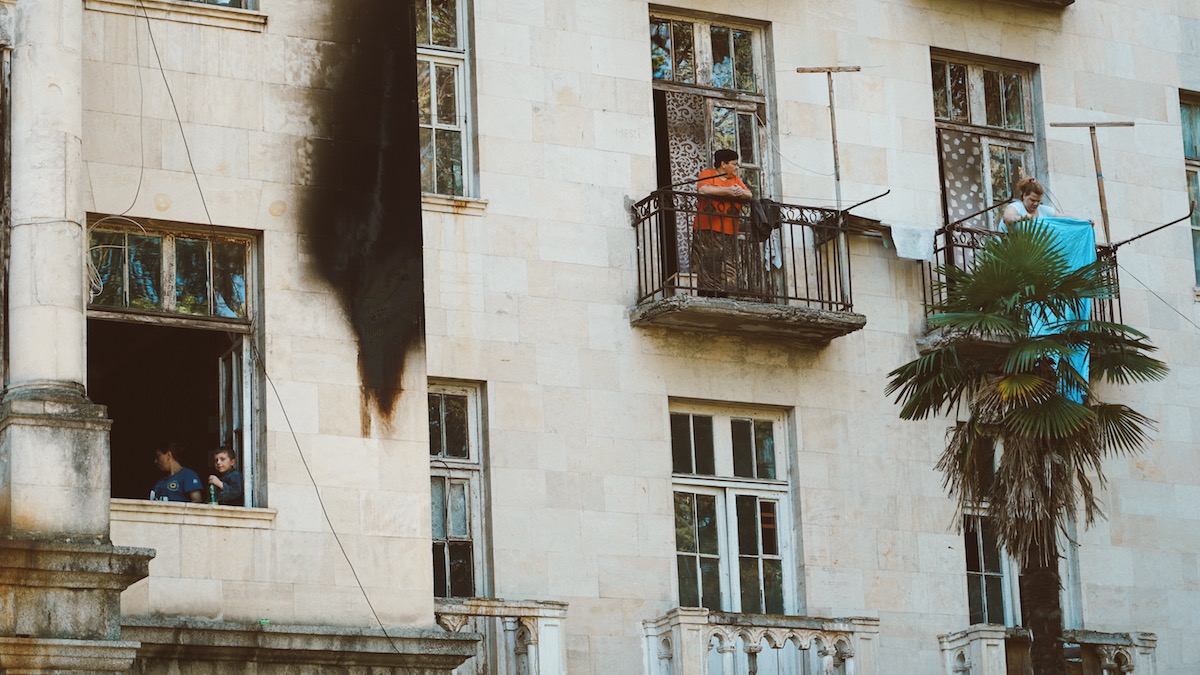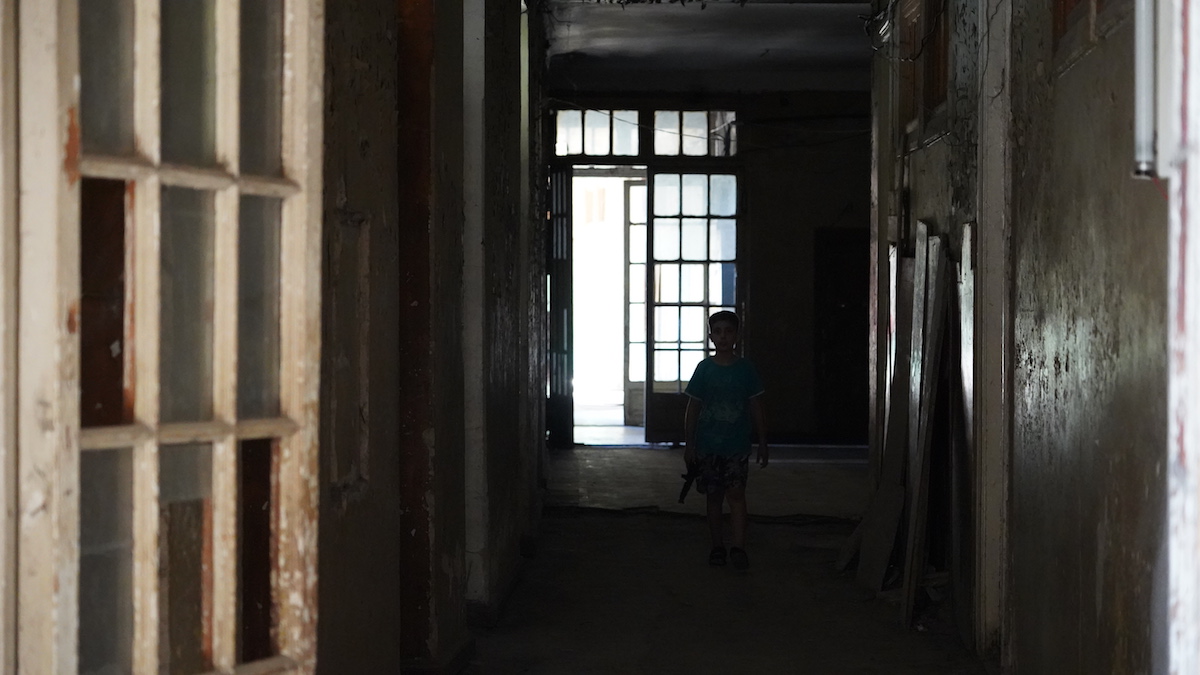Tskaltubo – Georgia’s abandoned paradise

Tskaltubo – the Georgian city once famous across the USSR. Known for its legendary healing waters and grandiose Stalinist architecture, it now stands in ruins. Its main visitors nowadays are researchers and photographers exploring its dead, abandoned buildings.
The first thing one notices upon arriving in Tskaltubo is that the city center is completely overgrown. While the place may have had a glorious past, the same cannot be said about its present. These memories are everywhere in the minds of locals.
“How do we live? We used to be number one, back when the train from Moscow was coming here every day,” says 51-year old Gia Porchkhidze, a local citizen. “The sanatoriums were packed full, people were renting rooms from us. Now the city is dead. No visitors, no tourists.”
Locals say that several hotels have opened in the town in recent years, while the local parks department has begun trimming back some of the overgrowth. Despite this, there are still not nearly enough jobs.
• Photo-report: 20 families living in a former sanatorium since the Karabakh April War
• How did Abkhazian resorts scare away Russian tourists?
• Poland: a work haven for Georgians
74-year old Leila Chikhladze also remembers the old days. “I had regular customers from Moscow and Leningrad. We were like family. Every year they stayed with me. We worked good jobs, we had extra income from holidayers. Now the elderly people have to live off their pensions, and the youth sit around unemployed. It’s difficult to live here. Everyone who can leave, does.”

City of ruins and refugees
According to census figures, in 1989 more than 17,000 people lived in Tskaltubo. By 2014, that number had fallen to 11,000. 5,000 of these are refugees from Abkhazia, forced to leave their homes during the war in 1993.
“Do you know what a beautiful building it used to be?” says Vazha Kopaliani, a displaced native of Sukhumi, who asks his neighbor to show us the nearby hotel complex. “The stairs were covered in red carpets, the tiles glittered. We have lived here now for 27 years. To maintain such a huge complex takes money, money we didn’t have. Now everything has collapsed. It’s dangerous to live here.”
Hotel Kolkheti is the current iteration of the former sanatorium Zheleznodorozhnik. In the building, one can still see signs of its former grandeur. But the walls are riddled with cracks, while rusty pipes leave a damp, moldy smell in the air. There is no trace of the luxurious tiling that once lined the floors.

In recent years, 11 new buildings have been built for internally displaced persons (IDPs) in Tskaltubo. People moved into them in stages, but some IDPs remain in the Soviet sanatoriums. Some are still waiting for an apartment, while others simply don’t want to move.
Other resorts are in much the same condition as the Kolkheti. Some of the largest include Meshakhte [Geo. Miner], the Iveria and Medea. The grandiose architecture, with sweeping Roman columns, marble sculptures and carved facades, still look impressive from afar.
But the ravages of time are noticeable. Trees grow inside the buildings, next to destroyed staircases. Windows and door frames are missing. What furniture remains is broken into small, decayed pieces.
The baths in the city’s central park are also destroyed. Out of nine, only the first and the sixth currently function.

History
The first mentions of mineral water springs in the Tskaltubo area appear in the 12th and 13th centuries. Knowledge of the area first reached Europe in 1782, in a publication by the Berlin Society of Natural Sciences.
Tskaltubo’s thermal springs are of the nitrogen type, with radon occurring naturally in the water. The water is 35 degrees on average – almost the same as the temperature of the human body. Scientific studies have shown that the chemical composition of the water has not changed since at least 1902. The natural temperature of the water does not fluctuate either, being unaffected by winter or heavy rain.
The water at Tskaltubo flows into the sanatoriums directly, without additional heating or cooling. It can reportedly treat up to 70 different illnesses, ranging from cardiovascular and muscular disorders to nervous system conditions and skin diseases. Staff at the resorts say that many of their visitors end up leaving their crutches and walking aids there.

The city of Tskaltubo was designed and built by Soviet planners in the 1950s. It was divided into balneological (medicinal bathing), resort, and living quarters. The center of the town is occupied by a park, spanning 80 hectares and including more than 150 different species of deciduous and coniferous plants. The resort has the shape of an amphitheater, with all the sanatoriums located in a ring facing the central park, where the springs are located.
The surviving spring and its visitors
The #6 spring is particularly famous, owing to its most well-known guest – Joseph Stalin, for whom it was built. His private bath is still located here.
Nana Gvishiani, the center’s head doctor, tells us that Stalin only ever spent a few days total here. After he returned to Moscow, he ordered all the members of the Council of Ministers to build and open their own sanatoriums in Tskaltubo. The order was carried out, and the Zheleznodorozhnik, Metallurg, Shakhter and other sanatoriums appeared.
A special residence for the Soviet leader was built in Tskaltubo in 1953. “Stalin’s dacha” still towers over the city today.
Spring #6 remains the largest health resort in the area, located in the center of the park.
It was the property of the Soviet Ministry of Defence and received 1,300 visitors a day.
Spring #6 was privatized in 2014 and completely restored by 2018. Its lobby, pools and halls were decorated in the 1940s-50s Soviet style.
Most of its current visitors are foreign. Clients arrive from Azerbaijan, Russia, Israel, Arab countries and beyond.
The occasional vacationer can be found in the city. Ahmed and Raya Mammadov came from Marneuli, in eastern Georgia. “We pay about six lari ($2) for a bed in a private house,” says Raya. “Treatments cost about 12 lari ($4) a day. I like it here, but my husband doesn’t. We are here for a week, but he wants to leave. There is not even a single café here, but I like the water. It really helps my joints.”

The government’s plans: what has happened, and what hasn’t
Former President of Georgia Mikheil Saakashvili announced in 2012 the start of the “great restoration of Tskaltubo.” He promised to turn the area into “a resort like Baden-Baden.”
The project is funded mainly by the World Bank, which has provided $37 million. The project includes the restoration of the city’s infrastructure and local parks.
The new Georgian government then initiated its own plan for the long-term development of Tskaltubo as a health spa resort.

The first stage of the plan intends to attract both local investors and those from Eastern Europe, while the second stage will focus on leading Western European spa brands. The plan was implemented in 2015, with the goal of attracting at least $720 million of investment to Tskaltubo.
The results of this plan, however, are still few.
Currently, they have managed to empty five sanatoriums of IDPs, moving them into the new apartment complexes. Two of the sanatoriums – Meshkakhte and Iveria – were privatized several years ago. Meshakhte is surrounded by a large green fence, its iron gates locked shut.

The sanatorium, built in 1952, was sold in summer 2015 for $2.5 million dollars. Its new owner, KBP Tbilisi, had announced plans to transform it into a five-star hotel by last year, but the investor deferred on payments, leading to delays. No work is currently occurring at Shakhter.
Iberia sanatorium, meanwhile, was sold for 253,000 lari (around $100,000). The privatization terms specified that the investor should fund the construction of a 160-room hotel on the site, producing jobs for 80 people. Theproject’sestimatedcostis€6 million.
Georgia’s National State Property Agency has now listed five additional sanatoriums for sale: Imereti, Savane, Tskaltubo, Filial, and Megobroba. Their prices range from two to eight million lari (around $700,000 – $2.7 million) each.
“If the city reclaims its old popularity and the old sanatoriums are restored, we can develop medical tourism. Then this dead city can be revived from a Soviet museum,” says local resident Gia Porchidze with cautious optimism.


















